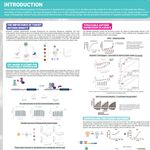Tumor Markers as Cancer Screening and Surveillance Tools
Cancer is a heterogeneous but related group of diseases wherein cells in certain tissues of the body proliferate uncontrollably and eventually invade adjacent and distant tissues. The oldest known archaeological evidence of human cancer dates back 1.7 million years. Tumor markers are molecules produced by the tumor or by the body in response to the tumor and may reveal the presence of the tumor. A variety of substances act as tumor markers including catecholamines, certain hormones, enzymes, and even antibody components. In 1847, Bence-Jones protein, the first tumor marker put into clinical use, was isolated from acidified boiled urine. Tumor markers can be employed for screening, diagnosis, prognostication, guiding therapy, as well as post-therapy surveillance. However, laboratorians need to consider sensitivity, specificity, clinical impact, and availability of convenient assays when it comes to putting a tumor marker into clinical practice. This presentation will discuss important pre-analytical, analytical, and post-analytical factors that clinical labs should consider when offering tumor marker testing. Limitations of tumor markers and CA125 as an example tumor marker in the context of ovarian cancer will also be discussed.
Learning Objectives:
1. Describe the types and characteristics of tumor markers.
2. Discuss considerations for clinical laboratories offering tumor marker testing.
3. Explain the utility of CA125 in ovarian cancer management.











